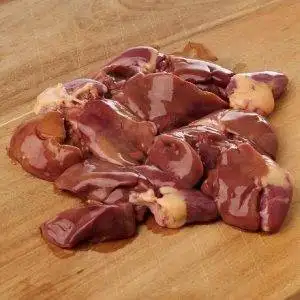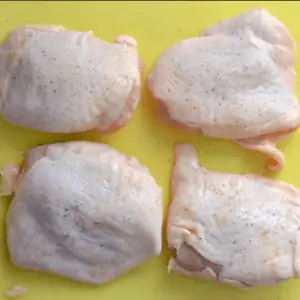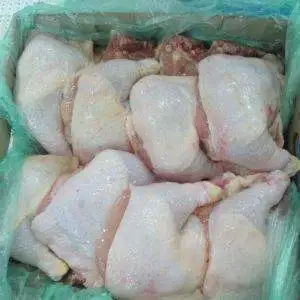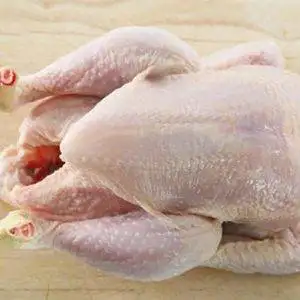Description
Frozen Chicken Liver from Brazil: A Complete Guide
Frozen chicken liver is a product of growing importance—both domestically in Brazil and globally. Brazil is already a powerhouse in poultry exports, and chicken offal (which includes liver) is increasingly in demand. This article delves into what makes frozen chicken liver from Brazil special: its nutrition, production, quality standards, trade environment, culinary applications, and Frozen Chicken Liver from Brazil things to watch out for.
Table of Contents
-
What Is Frozen Chicken Liver
-
Brazil’s Poultry and Offal Industry Overview
-
Nutritional Profile of Chicken Liver
-
Health Benefits and Risks
-
Production & Freezing Process in Brazil
-
Regulatory, Safety, and Quality Standards
-
Global Market & Trade Opportunities
-
Culinary Uses & Tips for Consumers
-
Sustainability, Animal Welfare, Environmental Impact
-
Buying Tips & Handling Advice
-
Conclusion
1. What Is Frozen Chicken Liver
“Chicken liver” refers to the liver organ of chickens, harvested post‐slaughter. When “frozen,” the liver is rapidly cooled to sub‐zero temperatures to preserve freshness, nutritional value, flavor, and safety. Frozen chicken liver is commonly used for human consumption (pâtés, stir‐fries, grilling, etc.), pet food, and processed food industries.
2. Brazil’s Poultry and Offal Industry Overview Frozen Chicken Liver from Brazil
Brazil ranks among the top poultry producers and exporters in the world. cancaoalimentos.com.br+3The Poultry Site+3Serviços e Informações do Brasil+3
-
The country has well‐established infrastructure for raising, slaughtering, processing, and exporting chicken and poultry products.
-
Offal—internal organs and parts like liver, gizzard, heart—is part of that export chain. Brazil has been expanding recognized export markets for chicken offal. For example, in 2025 Brazil secured market access with Vietnam for chicken offal exports via the approval of an International Sanitary Certificate (“ISC”). Serviços e Informações do Brasil
-
Brazilian producers, such as Canção Alimentos, offer individually frozen chicken liver products (1kg packaging; net weight by case 18kg) that are positioned for both domestic and international markets. cancaoalimentos.com.br
So, Brazil is not only producing raw material but also competing on freezing, packaging, certification, and safety.
3. Nutritional Profile of Chicken Liver Frozen Chicken Liver from Brazil
Chicken liver is among the most nutrient‐dense foods, especially when compared to muscle meats. Below are typical nutritional values and highlights per roughly 100g of raw or cooked chicken liver. (Actual values vary based on diet of chickens, processing, cooking method.)
| Nutrient | Approximate Value per 100g (raw / cooked) |
|---|---|
| Calories | ~110-170 kcal depending on cooking and prep. Slism+3verdiet.com+3Nutrition Advance+3 |
| Protein | ~16-25g Livestrong+1 |
| Fat | ~4-8g (including saturated fats) NutritionFact+1 |
| Carbohydrates | Very low, often under 1g (excluding any coating, batter) Nutrition Advance+1 |
| Cholesterol | High (important if dietary cholesterol is a concern) NutritionFact+1 |
| Vitamins | Very rich in Vitamin A, B vitamins (especially B12, riboflavin), folate. Nutrition Advance+2NutritionFact+2 |
| Minerals | Iron, selenium, copper, phosphorus etc. NutritionFact+1 |
These nutrients make chicken liver especially valuable in diets where deficiencies in iron, vitamin A, B12, or folate are concerns.
4. Health Benefits and Risks Frozen Chicken Liver from Brazil
Benefits
-
High Micronutrient Density
Chicken liver is an excellent source of iron (helps in prevention/treatment of anemia), vitamin A (important for vision, immune function, skin), B12 (nerve health, red blood cell formation), folate, selenium, etc. -
High Protein Content
Helps with muscle repair, satiety, and can support weight management when eaten in moderation. -
Low in Carbohydrates
Makes it suitable for low‐carb, keto, or other diets that limit carbs. -
Support in Special Population Groups
Pregnant women, children, or people with certain nutritional deficiencies may greatly benefit from small servings of liver.
Risks / Caveats
-
Vitamin A Overdose
Because liver contains very high levels of retinol (preformed vitamin A), consuming large quantities frequently can lead to hypervitaminosis A. This is particularly a concern for pregnant women. Moderation is key. -
High Cholesterol
For people with heart disease, high cholesterol, or certain metabolic conditions, frequent intake might be problematic. Though dietary cholesterol’s effect varies by individual and overall diet. -
Purine Load
Liver is rich in purines; excessive intake could exacerbate gout or kidney stone risk in susceptible individuals. -
Food Safety Concerns
If not frozen, handled, or cooked properly, chicken liver can harbor pathogens like Salmonella or Campylobacter. Freezing slows growth but doesn’t necessarily kill all pathogens—proper cooking is still essential.
5. Production & Freezing Process Frozen Chicken Liver from Brazil
To understand quality, it helps to look at how frozen chicken liver is produced in Brazil.
Farming & Slaughter
-
Poultry farms must follow biosecurity protocols to prevent disease (e.g. avian influenza, Newcastle disease). Outbreaks lead to suspensions of export certificates for affected regions. Agência Brasil+2Reuters+2
-
Chickens are raised under controlled conditions, including feed, veterinary care, and environmental controls to ensure good health and product safety.
Processing
-
After slaughter, livers are separated (with minimal contamination from other organs), cleaned, inspected.
-
Offal facilities follow sanitary standards. For export, they need certification (e.g. from Brazil’s Ministério da Agricultura, Pecuária e Abastecimento – MAPA).
Freezing
-
The liver must be frozen quickly (“flash freeze” or otherwise with temperature controls) to preserve texture, flavor, and nutritional content.
-
Packaging is done in hygienic conditions; often vacuum‐sealed or packed in sealed trays or plastic, then frozen to maintain quality.
Storage & Transport
-
Cold chain integrity is vital. The product must be kept frozen (usually around ‐18 °C or colder) from factory floor to transport to shipping to final destination.
-
Brazil’s exporters usually comply with international standards, including sanitary certificates and import country‐specific requirements.
Example: Product by Canção Alimentos
The product “Individually Frozen Chicken Liver” from Brazilian company Canção Alimentos is described as:
-
Free of hormones and preservatives. cancaoalimentos.com.br
-
Offered in 1kg packaging; case/delivery packaging (net weight per box) is 18kg. cancaoalimentos.com.br
-
Nutritional content (for 118g serving, approx. 2 pieces) is: 125 kcal, 21g protein, 5g fat. cancaoalimentos.com.br
6. Regulatory, Safety, and Quality Standards Frozen Chicken Liver from Brazil
Because frozen chicken liver is a food product that can carry risks, there are several regulatory, safety, and quality dimensions to consider, especially for production in Brazil for export.
-
Sanitary & Phytosanitary (SPS) Standards: Brazil complies with international trade protocols and health certificates. The government works to open new markets by securing sanitary approvals (e.g., ISC for Vietnam for chicken offal). Serviços e Informações do Brasil
-
Disease Outbreaks & Trade Suspensions: If disease outbreaks (bird flu, Newcastle disease) occur, exports from affected areas may be suspended. Example: export suspensions from Rio Grande do Sul following outbreaks. Agência Brasil+2Reuters+2
-
Cold Chain: Ensuring that once frozen, the product remains frozen and not subjected to partial thawing/refreezing, which can degrade quality and safety.
-
Residue / Additive Regulations: Many markets require that meats (including offal) be free of unauthorized antibiotics, hormones, or chemical residues. Brazil’s major exporters maintain compliance.
-
Labeling & Traceability: Traceability from farm → slaughterhouse → freezing facility → packaging → export is critical. Labels often include country of origin, packaging date, freezing date, lot number, storage instructions, etc.
7. Global Market & Trade Opportunities
Existing Trade
-
Brazil is a major chicken meat exporter globally. Exports have been growing, despite occasional setbacks from disease outbreaks or trade bans. The Poultry Site+2The Rio Times+2
-
Export markets include China, the Middle East, Asia, and more. Offal (including chicken liver) is part of the mix. Restaurants, food processors, and pet food industries are important buyers.
New Market Access
-
Vietnam recently formally opened a market for Brazilian chicken offal exports via ISC approval. Serviços e Informações do Brasil
-
There’s growing demand in Southeast Asia, the Middle East, and Africa for less expensive protein sources, especially organ meats.
Trade Risks & Opportunities
-
Opportunities arise when demand in importing countries increases (e.g. due to domestic supply shortages, rising costs of muscle meats, or increased acceptance of offal in diets).
-
Risks include disease outbreaks, trade bans, logistic disruptions, competition from other producers (e.g., in Thailand, USA, Europe), currency fluctuations, and import regulatory changes.
Pricing & Positioning
-
Frozen chicken liver is often more affordable than muscle meats per unit protein or per weight, making it economically interesting.
-
Brazilian producers can position their products based on quality (freezing, safety, traceability), price, consistency, and compliance with import country standards (e.g., halal, organic, etc.).
8. Culinary Uses & Tips for Consumers Frozen Chicken Liver from Brazil
Uses
-
Home Cooking: Fried chicken liver, sautéed with onions or garlic, liver pâtés, spreads.
-
Restaurants: As appetizers, in traditional dishes, ethnic cuisine, gourmet uses.
-
Processed Foods: Can be used in sausages, pâtés, liverwurst.
-
Pet Foods: Because of its high nutrient density, often used in pet food formulations.
How to Cook It Well
-
Thaw thoroughly in refrigerator (not at ambient temperature) to maintain safety and texture.
-
Avoid overcooking: liver cooks quickly and becomes tough/crumbly if cooked too long. Medium doneness tends to preserve moisture and flavor.
-
Use complementary flavors: onions, herbs, spices (thyme, garlic, paprika), sauces. Citrus or acidic components (vinegar, lemon) help balance richness.
-
For pâté or mousses: blending cooked liver with butter, cream, or other binders yields smoother textures.
Storage & Shelf Life
-
Frozen liver kept at appropriate temperatures (e.g., ‐18 °C) stays safe and maintains quality for several months (often 6-12 months, depending on packaging and freezer conditions).
-
Once thawed, consume within 1-2 days if kept refrigerated. Do not refreeze after fully thawed unless cooked.
9. Sustainability, Animal Welfare, Environmental Impact
These aspects are receiving increasing attention from consumers, regulators, and industry stakeholders.
-
Animal Welfare: The conditions in which chickens are raised — stocking density, feed, veterinary care, slaughtering process — affect not only ethics but also meat quality and safety. Producers exporting to markets with strict welfare expectations often must meet certification standards.
-
Environmental Impact: Poultry production has lower greenhouse gas emissions per kilogram of protein compared to beef, but there are still concerns: feed sourcing (soy, corn), water usage, waste management, processing impacts.
-
Waste Reduction: Using offal like liver adds value, reduces waste (since all parts of the animal are utilized), which is more sustainable.
10. Buying Tips & Handling Advice Frozen Chicken Liver from Brazil
For importers, retailers, or consumers:
-
Check Certifications
Ensure product is from a facility with recognized sanitary/health certification, especially relevant for international trade (e.g. SIF in Brazil). -
Inspect Packaging
Look for intact packaging, freezer burn (which indicates temperature fluctuations), proper labeling (freezing date, lot number, country of origin). -
Defrost Correctly
Thaw in refrigerator, using sealed containers to prevent drips; avoid microwave thawing unless immediately cooking. -
Cook Thoroughly
Internal cooking temperature should reach safe levels (varies by country guidelines). -
Buy in Quantities That Suit Use
If purchasing larger frozen packs, ensure you can use them while flavor and texture are good; divide and freeze in smaller portions if needed. -
Moderation in Consumption
Especially when consuming organ meats like liver, balance is key to avoid over‐consumption of fat, cholesterol, or highly concentrated vitamins like A.
11. Conclusion
Frozen chicken liver from Brazil offers a potent combination of affordability, nutrition, and global trade readiness. For consumers, it’s a powerhouse of micronutrients, an excellent protein source, and versatile in the kitchen. For producers and exporters, the keys lie in quality, traceability, compliance with sanitary standards, and opening new markets. While there are health considerations (particularly around vitamin A, cholesterol, and food safety), with proper handling and moderation, can be a valuable addition to diets and supply chains.






Reviews
There are no reviews yet.